Japanese Food Types
- Published on : 25/05/2024
- by : Japan Experience
- Youtube
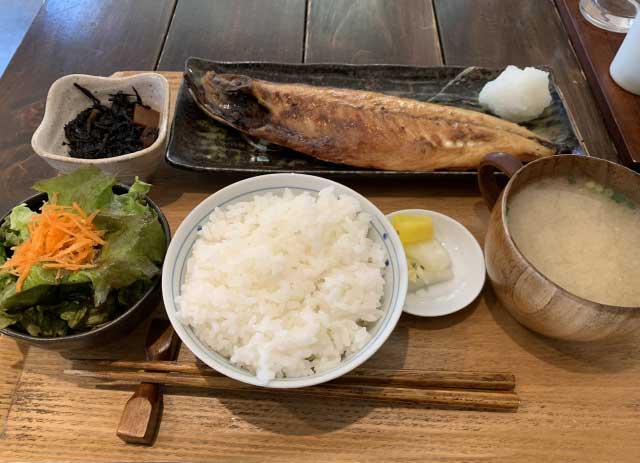
Teishoku
Japanese cuisine is renowned for its diverse flavors, meticulous preparation, and emphasis on seasonal ingredients. From traditional washoku to modern fusion dishes, Japanese food offers a vast array of tastes and textures. This comprehensive guide explores the various types of Japanese cuisine, from ancient recipes to contemporary innovations, highlighting the cultural significance and culinary techniques that make Japanese food a global favorite.
Traditional Japanese Cuisine (Washoku)
Washoku, or traditional Japanese cuisine, is characterized by its focus on rice, miso soup, and side dishes that emphasize the natural flavors of seasonal ingredients. This style of cooking has been recognized by UNESCO as an Intangible Cultural Heritage, reflecting its importance in Japanese culture and history.
Key elements of washoku include:
- Ichiju-sansai: The basic structure of a meal, consisting of one soup and three side dishes
- Dashi: A fundamental soup stock made from kombu (kelp) and katsuobushi (dried bonito flakes)
- Umami: The fifth taste, often described as savory, which is prominent in many Japanese dishes
- Seasonal ingredients: The use of fresh, local produce that reflects the changing seasons
Traditional washoku dishes include sushi, tempura, and kaiseki ryori, a multi-course meal that showcases the chef's skill and the season's best offerings.
Staple Foods in Japanese Cuisine
Japanese cuisine is built around several key staple foods that form the foundation of many dishes:
1. Rice (Gohan): The cornerstone of Japanese meals, usually served plain or seasoned lightly.
2. Noodles: Various types including:
3. Tofu: A versatile protein source made from soybeans, used in many dishes from soups to main courses.
4. Miso: Fermented soybean paste used in soups, marinades, and sauces.
5. Seaweed: Various types like nori, wakame, and kombu, used in soups, salads, and as wrappings for sushi.

Soba buckwheat noodles
Popular Japanese Dishes and Delicacies
Japan offers a wide array of iconic dishes that have gained popularity both domestically and internationally:
Sushi and Sashimi: Raw fish served either on vinegared rice (sushi) or alone (sashimi).
Tempura: Lightly battered and deep-fried seafood and vegetables.
Ramen: Chinese-style noodles served in a meat or fish-based broth, often flavored with soy sauce or miso.
Unagi: Grilled freshwater eel glazed with a sweet soy-based sauce.
Yakiniku: Japanese-style barbecue where diners grill bite-sized pieces of meat and vegetables at the table.
Okonomiyaki: A savory pancake containing a variety of ingredients, often described as a "Japanese pizza".
Japanese Curry: A mild, sweet curry sauce served with rice and various toppings.
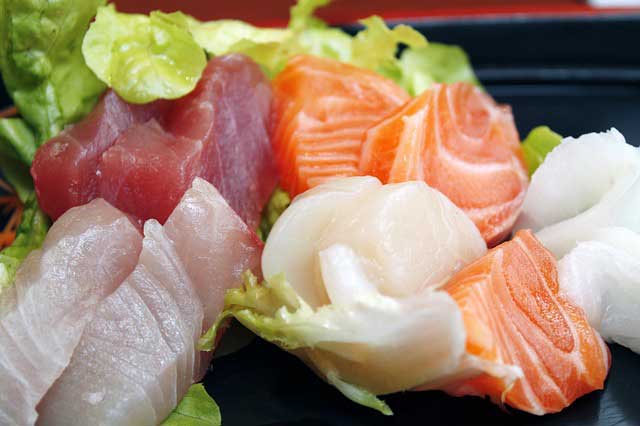
Sashimi
Regional Specialties and Local Cuisine
Each region of Japan has its own unique culinary traditions and specialties:
Hokkaido: Known for fresh seafood, dairy products, and hearty dishes like soup curry and Genghis Khan (grilled lamb).
Tohoku: Famous for its nabe (hot pot) dishes, particularly kiritanpo nabe from Akita prefecture.
Kanto (Tokyo area): Home to many fusion dishes and international cuisines, as well as traditional foods like monjayaki.
Kansai (Osaka, Kyoto): Known for okonomiyaki, takoyaki (octopus balls), and Kyoto's refined kaiseki cuisine.
Kyushu: Famous for tonkotsu ramen, mentaiko (spicy cod roe), and Nagasaki's champon noodles.
Okinawa: Offers unique dishes influenced by its tropical climate and history, such as goya champuru (bitter melon stir-fry) and Okinawan soba.
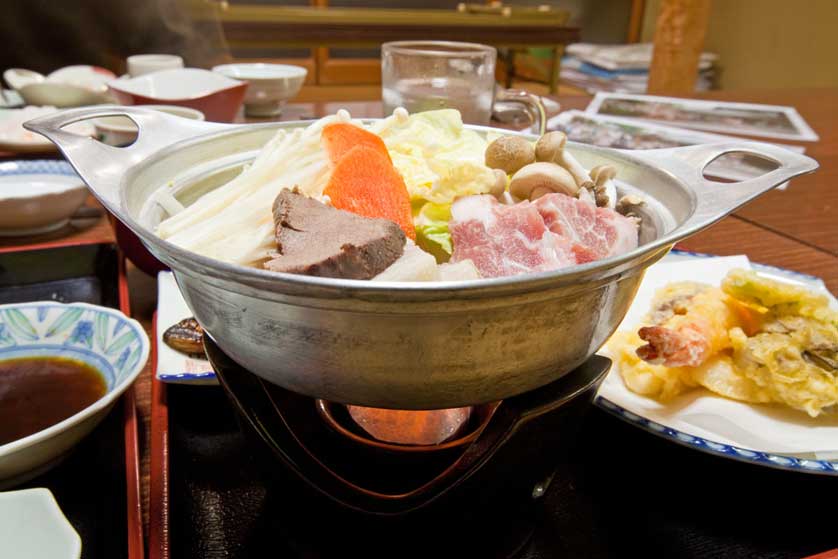
Japanese nabe with meat and vegetables
Japanese Cooking Techniques and Styles
Japanese cuisine employs various cooking techniques that contribute to its unique flavors and textures:
Grilling (Yaki): Used in dishes like yakitori (grilled chicken skewers) and yakiniku.
Simmering (Nimono): Slow-cooking ingredients in a flavorful broth, often used for vegetables and fish.
Raw preparation (Namasu): Techniques for preparing and serving raw ingredients safely, as in sashimi.
Steaming (Mushimono): Used for dishes like chawanmushi (savory egg custard) and various dumplings.
Deep-frying (Agemono): Employed in tempura and tonkatsu (breaded pork cutlet).
Pickling (Tsukemono): A preservation technique that creates various pickled side dishes.
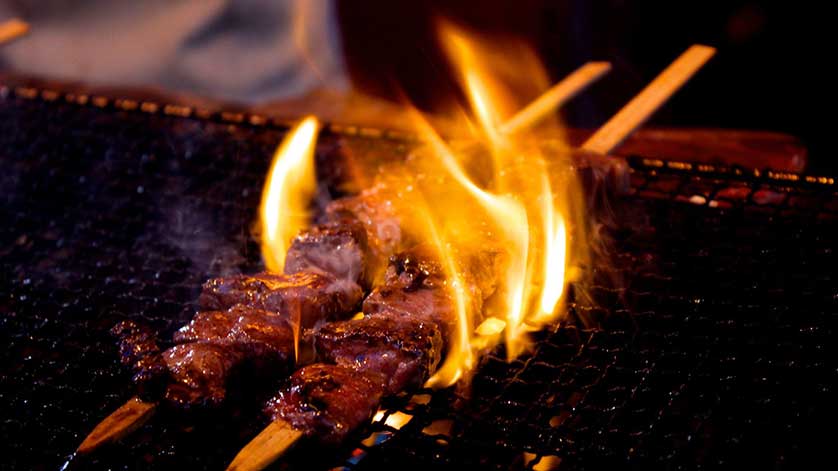
Yakitori
Seasonal and Festive Japanese Foods
Seasonality plays a crucial role in Japanese cuisine, with certain dishes and ingredients associated with specific times of the year:
Spring: Sakura-flavored sweets, fresh bamboo shoots, and seasonally available fish like tai (sea bream).
Summer: Cold noodle dishes like zaru soba, grilled eel, and refreshing desserts like kakigori (shaved ice).
Autumn: Matsutake mushrooms, sanma (Pacific saury), and dishes featuring chestnuts and sweet potatoes.
Winter: Hearty nabe dishes, oden (simmered assortment of foods), and mochi for New Year celebrations.
Festive foods also play a significant role in Japanese culture, with special dishes prepared for occasions like New Year (osechi ryori), Children's Day (kashiwa mochi), and local matsuri (festivals).
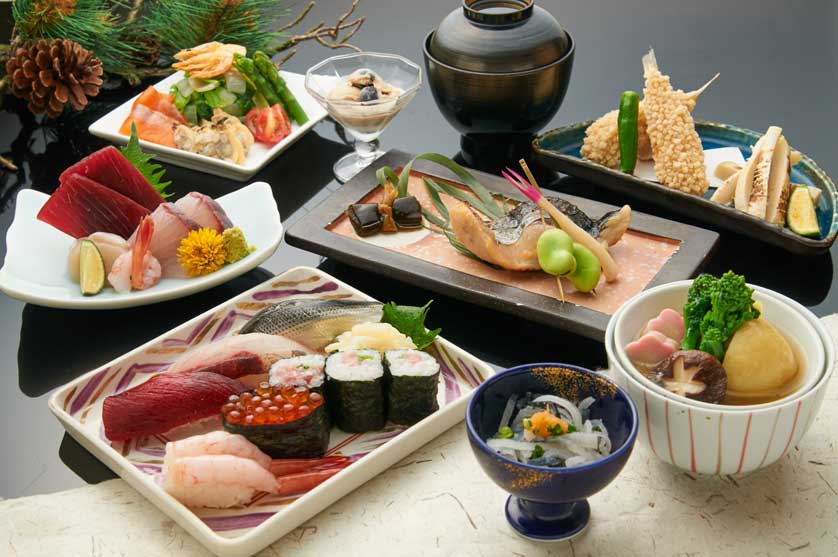
Modern and Fusion Japanese Cuisine
Contemporary Japanese cuisine continues to evolve, incorporating international influences and modern techniques:
Yoshoku: Western-influenced Japanese dishes like hamburger steak, omurice (omelet rice), and Japanese curry.
Innovative sushi: Creative sushi rolls incorporating non-traditional ingredients and fusion flavors.
Molecular gastronomy: High-end restaurants experimenting with avant-garde techniques applied to traditional Japanese flavors.
Health-focused trends: Dishes emphasizing superfoods, plant-based ingredients, and wellness-oriented cooking methods.
Japanese cuisine continues to captivate food lovers worldwide with its balance of tradition and innovation. From the simplicity of a perfectly grilled piece of fish to the complexity of a multi-course kaiseki meal, Japanese food offers a culinary journey that engages all the senses. As global interest in Japanese cuisine grows, so too does the opportunity to explore the depth and diversity of this remarkable food culture.









